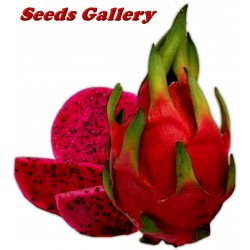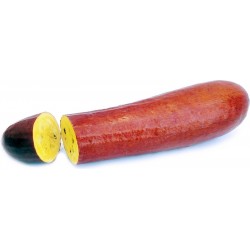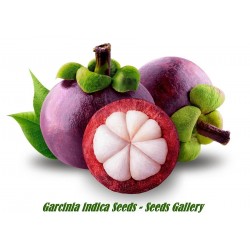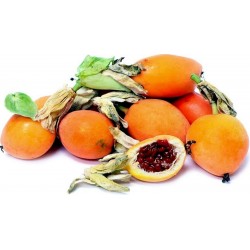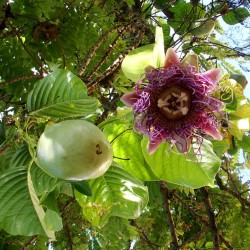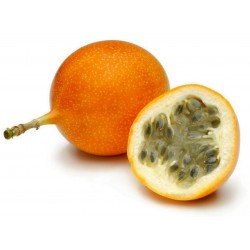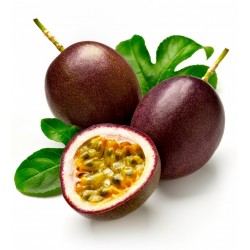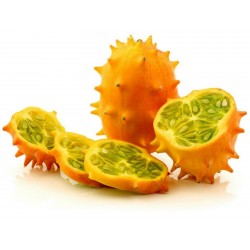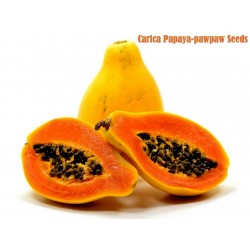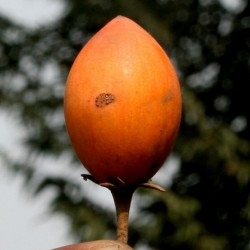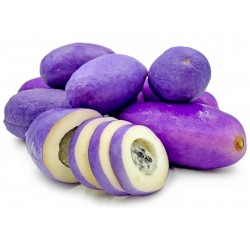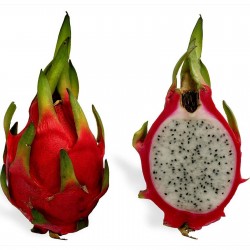
Semena Pitahaya blanca,...
Cena
2,35 €
SKU: V 12 W
Seeds Gallery Com,
5/
5
<h2><strong>Semena Pitahaya blanca, Hylocereus</strong></h2>
<h2><span style="color: #ff0a0a;"><strong>Cena za balení 20 nebo 100 semen.</strong></span></h2>
<div>
<p style="color: #202122; font-size: 14px;"><b>Pitahaya</b>, zkráceně též<span> </span><b>pitaya</b>, je označení pro některé druhy<span> </span>cereusovitých<span> </span>kaktusů a pro jejich, často jedlé, plody. Široce v tropech pěstované jsou některé druhy rodu<span> </span><i>Hylocereus</i>, které dávají velké plody zvané též<span> </span>dragon fruit<span> </span>a dovážené do obchodů v Evropě. Další druhy jsou známé jen lokálně. V domovině je název<span> </span><i>pitayo</i><span> </span>používán hlavně pro druhy rodu<span> </span><i>Stenocereus</i>.</p>
<h2 style="color: #000000; font-size: 1.5em;"><span class="mw-headline" id="Dějiny_dračího_clanu">Dějiny dračího clanu</span></h2>
<p>Původně používali termín<span> </span><i>pitahaya</i><span> </span>Španělé pro označení sloupovitých kaktusů a jejich plodů. Francisco Vasquez de Coronado na expedici v letech 1540 - 1542 popsal přípravu vína a pojídání čerstvých plodů domorodci ze<span> </span>saguara, které označil jako pitahaya, takto: Pijí tam víno připravené z pitahaya, což je plod z velkých bodláků, který se otevírá jako<span> </span>granátové jablko. Toto víno je ohlupuje.<span> </span><sup id="cite_ref-coronado_1-0" class="reference">[1]</sup><span> </span><sup id="cite_ref-coronado2_2-0" class="reference">[2]</sup><span> </span>Dnes se již pro saguaro termín<span> </span><i>pitahaya</i><span> </span>nepoužívá.</p>
<p>Od původního názvu<span> </span><i>pitahaya</i><span> </span>existují zkrácené názvy<span> </span><i>pitaya, pitayo</i><span> </span>a dále zdrobněliny<span> </span><i>pitahayita, pitayita</i>, často s přívlastkem, například<span> </span><i>Pitahaya agria, Pitayo de querretao</i>. Tyto názvy jsou lokálně používány i pro druhy kaktusů, které jedlé plody neposkytují, nebo jsou plody dokonce neznámé, ale vzhledem plodonosné druhy připomínají.</p>
<h2 style="color: #000000; font-size: 1.5em;"><span id="P.C5.99ehled_druh.C5.AF"></span><span class="mw-headline" id="Přehled_druhů">Přehled druhů</span></h2>
<h3 style="color: #000000; font-size: 1.2em;"><span class="mw-headline" id="Hylocereus_Dragon_fruit"><i>Hylocereus</i><span> </span>Dragon fruit</span></h3>
<div class="uvodni-upozorneni hatnote">Podrobnější informace naleznete v článku<span> </span>Dragon fruit.</div>
<p>Několik druhů šplhavých, liánovitých až<span> </span>epifytických kaktusů<span> </span>rodu<span> </span><i>Hylocereus</i><span> </span>poskytuje velké jedlé plody známé pod obecným názvem pitahaya a též pod názvem<span> </span>Dragon fruit, dračí ovoce. Jsou široce pěstované v tropickém pásmu, mimo Ameriku hlavně v Asii, kde nejsou původní. Plody jsou dodávány do obchodních řetězců po celém světě. Jsou rozeznávány tři druhy plodů pitahají, přičemž botanické zařazení není úplně vyjasněné. Jednak botanici pod hlavní druhy slučují další druhy, případně používají synonymní názvy, jednak se jako plody nesoucí uvádí i další minoritní druhy. Rozlišují se tři typy pitahají z okruhu dragon fruit.</p>
<h4 style="color: #000000;"><span class="mw-headline" id="Pitahaya_blanca">Pitahaya blanca</span></h4>
<p>bílá pitahaya je nejběžnější, široce pěstovaný druh, známý i z obchodů. Má červenou slupku a bílou dužinu s množstvím drobných, černých, jedlých semen. Hlavní druh je<span> </span><i>Hylocereus undatus</i>, dále je uváděn též příbuzný<span> </span><i>Hylocereus triangularis</i>.<sup id="cite_ref-andfruits_3-0" class="reference">[3]</sup><span> </span>Pro velké, vanilkou vonící květy je<span> </span><i>Hylocereus undatus</i><span> </span>pěstován i jako okrasná rostlina.</p>
<h4 style="color: #000000;"><span class="mw-headline" id="Pitahaya_amarilla">Pitahaya amarilla</span></h4>
<p>žlutá pitahaya, má žlutou slupku a bílou dužinu. Hlavní druh je<span> </span><i>Hylocereus megalanthus</i><span> </span>synonymum je<span> </span><i>Selenicereus megalanthus.</i><span> </span>Je vzácná.</p>
<h4 style="color: #000000;"><span class="mw-headline" id="Pitahaya_roja">Pitahaya roja</span></h4>
<p>červená pitahaya, má červenou slupku i dužinu. Jsou uváděny druhy<span> </span><i>Hylocereus polyrhizus, Hylocereus costaricensis, Hylocereus monacanthus</i>. Chuť dužiny je výraznější než u typů s bílou dužinou.</p>
<h3 style="color: #000000; font-size: 1.2em;"><span class="mw-headline" id="Selenicereus"><i>Selenicereus</i></span></h3>
<p>Rod je příbuzný a velmi podobný rodu<span> </span><i>Hylocereus</i>. Je zde užíván název<span> </span><i>pitaya</i><span> </span>a<span> </span><i>pitayita</i><span> </span>i pro druhy s nejedlými plody.</p>
<h4 style="color: #000000;"><span class="mw-headline" id="Selenicereus_coniflorus_Pitayita_de_Culebra"><i>Selenicereus coniflorus</i><span> </span>Pitayita de Culebra</span></h4>
<p>Obvykle převislé epifytické rostliny. Květy jsou bílé, vnější okvětní úzké lístky jsou žluté až oranžové. Vyskytuje se v nížinách podél Mexického zálivu, Mexiko, Veracruz. Plody jsou až 6 cm velké, jedlost není udávána.<sup id="cite_ref-andseleni_4-0" class="reference">[4]</sup></p>
<h4 style="color: #000000;"><span class="mw-headline" id="Selenicereus_testudo_Pitaya_de_Tortuga"><i>Selenicereus testudo</i><span> </span>Pitaya de Tortuga</span></h4>
<p>Starší název je<span> </span><i>Deamia testudo</i><span> </span>Karwinsky ex Zuccarini 1837. Další synonymní název je<span> </span><i>Deamia diabolica</i><span> </span>Clover 1938. Květy jsou až 25 cm dlouhé a 15 cm široké. Je sice známý pod názvem<span> </span><i>pitaya</i>, ale jeho plody nejsou známy. Je rozšířený od Mexika až po Kolumbii .<sup id="cite_ref-andseleni_4-1" class="reference">[4]</sup></p>
<h4 style="color: #000000;"><span id="Selenicereus_setaceus_ananasov.C3.BD_kaktus"></span><span class="mw-headline" id="Selenicereus_setaceus_ananasový_kaktus"><i>Selenicereus setaceus</i><span> </span>ananasový kaktus</span></h4>
<p>Epifytické rostliny s obvykle trojbokými stonky. Květy jsou obrovské, až 30 cm velké, bílé, vnější úzké okvětní lístky jsou žlutavé. Plody jsou červené, se štětinami. Jsou sklízeny domorodci. Oblast výskytu je Jižní Amerika, Brazílie, Bolívie, Paraguay, Argentina. Je znám pod názvem<span> </span><i>ananasový kaktus</i>, ale přes jedlé plody se pro něj název<span> </span><i>pitahaya</i><span> </span>a odvozené názvy nepoužívají.<span> </span><sup id="cite_ref-andseleni_4-2" class="reference">[4]</sup></p>
<h3 style="color: #000000; font-size: 1.2em;"><span class="mw-headline" id="Saguaro">Saguaro</span></h3>
<div class="uvodni-upozorneni hatnote">Podrobnější informace naleznete v článku<span> </span>Saguaro.</div>
<p>Saguaro je druh kaktusu<span> </span><i>Carnegia gigantea</i>, který poskytuje jedlé plody. Ačkoliv byl poprvé v historii název<span> </span><i>pitahaya</i><span> </span>použit právě ve spojení s tímto kaktusem<sup id="cite_ref-coronado_1-1" class="reference">[1]</sup><span> </span><sup id="cite_ref-coronado2_2-1" class="reference">[2]</sup>, dnes se pro tento kaktus termín<span> </span><i>pitahaya</i><span> </span>nepoužívá. Plody saguara jsou dodnes sklízeny domorodci.</p>
<h3 style="color: #000000; font-size: 1.2em;"><span class="mw-headline" id="Stenocereus"><i>Stenocereus</i></span></h3>
<p><i>Stenocereus</i><span> </span>je rod středně velkých až velkých cereusů. Pro mnoho druhů je lokálně užíván název<span> </span><i>pitayo</i><span> </span>a další. Některé druhy poskytují jedlé plody tradičně sbírané domorodci a jsou někdy extenzivně vysazované (<i>Stenocereus fricii, Stenocereus griseus, Stenocereus queretaroensis, Stenocereus stellatus</i>) a šířené i mimo původní oblast výskytu. Naopak jiné druhy jedlé plody neposkytují, ale podle podobného vzhledu stonku je na ně též přeneseně používán název<span> </span><i>pitahaya</i><span> </span>a jeho odvozeniny. Plody jsou méně či více dužnaté, občas s trny, zbytky seschlého květu často přetrvávají. Obsahují až 2 mm velká, černá semena.<sup id="cite_ref-andsteno_5-0" class="reference">[5]</sup></p>
<h4 style="color: #000000;"><span class="mw-headline" id="Stenocereus_fricii_Pitayo_de_aguas"><i>Stenocereus fricii</i><span> </span>Pitayo de aguas</span></h4>
<p>Vysoký druh cereusu dosahující výšky 4 až 7 m a přitom štíhlý, do 15 cm průměru stonku. Je pojmenován po českém lovci kaktusů<span> </span>A. V. Fričovi. Vytváří poboční větve ve středu výšky hlavního stonku, podobně jako saguaro. Květy jsou denní, až 12 cm velké, bílé, krémové, narůžovělé. Plody jsou až 5 cm velké, žluté až červené. Původní oblast výskytu je Mexiko: Jalisco, Colima, Michoacán. Je domorodci vysazován pro jedlé plody a extenzivně šířen i mimo původní oblast výskytu.<sup id="cite_ref-andsteno_5-1" class="reference">[5]</sup><span> </span><sup id="cite_ref-andfruits_3-1" class="reference">[3]</sup></p>
<h4 style="color: #000000;"><span class="mw-headline" id="Stenocereus_griseus_Pitayo_de_Mayo"><i>Stenocereus griseus</i><span> </span>Pitayo de Mayo</span></h4>
<p>Stromovitý rozvětvený cereus je vysoký 6 až 9 m. Květy jsou noční, ale přetrvávají další den, jsou trubkovité, až 10 cm dlouhé. Plody jsou podlouhlé, zbytky květu opadávají. Je domorodci vysazován pro jedlé plody. Původní areál výskytu je pobřeží Venezuely a přilehlé ostrovy, druhotně je rozsáhle zavlečen až do Mexika.<sup id="cite_ref-andsteno_5-2" class="reference">[5]</sup><span> </span><sup id="cite_ref-andfruits_3-2" class="reference">[3]</sup></p>
<h4 style="color: #000000;"><span id="Stenocereus_gummosus_Pitahaya_agria.2C_Pitayo_agrio"></span><span class="mw-headline" id="Stenocereus_gummosus_Pitahaya_agria,_Pitayo_agrio"><i>Stenocereus gummosus</i><span> </span>Pitahaya agria, Pitayo agrio</span></h4>
<p>Cereus tvořící trsy křovitých stonků rozvětvených od země a vysokých až 1,5 m. Květy jsou noční, až 14 cm dlouhé, růžové. Poskytuje jedlé plody tradičně sbírané kmenem Seri. Je široce rozšířen v Baja California v Mexiku. Stonek obsahuje omamné látky a drcený stonek je používán k omámení ryb při rybolovu.<sup id="cite_ref-andsteno_5-3" class="reference">[5]</sup><span> </span><sup id="cite_ref-andfruits_3-3" class="reference">[3]</sup><span> </span><sup id="cite_ref-andotheruse_6-0" class="reference">[6]</sup></p>
<h4 style="color: #000000;"><span class="mw-headline" id="Stenocereus_pruinosus_Pitayo_de_Octubre"><i>Stenocereus pruinosus</i><span> </span>Pitayo de Octubre</span></h4>
<p>Stromovitý rozvětvený cereus vysoký 4 až 5 m. Květy jsou denní i noční, trubkovité, až 9 cm dlouhé, bílé. Plody jsou oválné, jedlé a jsou sklízeny domorodci z divoce rostoucích rostlin. Oblast výskytu je Mexiko: Tamaulipas, Veracruz, Puebla, Guerrero, Oaxaca a Chiapas.<sup id="cite_ref-andsteno_5-4" class="reference">[5]</sup><span> </span><sup id="cite_ref-andfruits_3-4" class="reference">[3]</sup></p>
<p>Malé semenáčky výrazného tvaru jsou nabízeny široké veřejnosti.</p>
<h4 style="color: #000000;"><span id="Stenocereus_stellatus_Pitayo.2C_Xonocostle"></span><span class="mw-headline" id="Stenocereus_stellatus_Pitayo,_Xonocostle"><i>Stenocereus stellatus</i><span> </span>Pitayo, Xonocostle</span></h4>
<p>Spíše křovitý, už od báze rozvětvený, méně často stromovitý cereus, vysoký 2 až 4 m. Květy jsou noční, výrazně trubkovité, až 6 cm dlouhé, růžové. Plody jsou jedlé a je pro ně vysazován domorodci. Oblast výskytu je Mexiko: Morelos, Puebla a Oaxaca.<span> </span><sup id="cite_ref-andsteno_5-5" class="reference">[5]</sup><span> </span><sup id="cite_ref-andfruits_3-5" class="reference">[3]</sup></p>
<p>Je často pěstován v evropských sbírkách jako malý ozdobný semenáček s výrazným, světlým, hvězdicovitě uspořádaným otrněním. Latinsky<span> </span><i>stellatus</i><span> </span>znamená hvězdnatý.</p>
<h4 style="color: #000000;"><span id="Stenocereus_queretaroensis_Pitayo_de_Quer.C3.A9taro"></span><span class="mw-headline" id="Stenocereus_queretaroensis_Pitayo_de_Querétaro"><i>Stenocereus queretaroensis</i><span> </span>Pitayo de Querétaro</span></h4>
<p>Velký druh cereusu kandelábrovitě větvený, dosahující výšky až 6 m. Vytváří velké množství pobočních stonků asi v třetině výšky, podobně jako saguaro. Květy jsou denní i noční, vytvářejí se na bočních částech stonků, jsou až 12 cm velké, bílé. Plody jsou lesklé, pestrobarevné se zbytky areol na povrchu. Je domorodci vysazován pro jedlé plody. Plody bývají dodnes nabízeny na místních trzích. Oblast výskytu je Mexiko: Queretaro, Guanajuato, Jalisco, Colima a Michoacán.<span> </span><sup id="cite_ref-andsteno_5-6" class="reference">[5]</sup><span> </span><sup id="cite_ref-andfruits_3-6" class="reference">[3]</sup></p>
<h4 style="color: #000000;"><span id="Stenocereus_thurberi_Pitayo_dulce.2C_Organo_Marisme.C5.88a.2C_Meuhel.C3.A9"></span><span class="mw-headline" id="Stenocereus_thurberi_Pitayo_dulce,_Organo_Marismeňa,_Meuhelé"><i>Stenocereus thurberi</i><span> </span>Pitayo dulce, Organo Marismeňa, Meuhelé</span><span class="mw-editsection" style="font-size: small;"><span class="mw-editsection-bracket" style="color: #54595d;">[</span></span></h4>
<p>Rostliny jsou křovité až stromovité, bohatě větvené, dosahují až 8 m výšky. Květy jsou noční, ale přetrvávají další den, jsou trubkovité, nahoře široce otevřené, 4 - 8 cm dlouhé, bílé, s množstvím prašníků a vystupující bliznou. Plody jsou červené, jedlé, tradičně sbírané kmenem Seri. Dále je využíván zdřevnatělý stonek pro výrobu lodí a měkké části v tradiční medicíně. Oblast výskytu je Arizona a Mexiko: Sonora, celá Baja California až po jižní mexickou část a Sinaloa.<span> </span><sup id="cite_ref-andsteno_5-7" class="reference">[5]</sup><span> </span><sup id="cite_ref-andfruits_3-7" class="reference">[3]</sup><span> </span><sup id="cite_ref-andotheruse_6-1" class="reference">[6]</sup></p>
<p>Je často pěstován v evropských sbírkách jako malý semenáček pochmurného vzhledu s výrazným hustým tmavým otrněním a temně zelenou, ale lesklou pokožkou, známý též pod názvem<span> </span><i>Marshallocereus thurberi</i>.</p>
<h4 style="color: #000000;"><span id="Stenocereus_eichlamii_Pitahaya.2C_Guanocal"></span><span class="mw-headline" id="Stenocereus_eichlamii_Pitahaya,_Guanocal"><i>Stenocereus eichlamii</i><span> </span>Pitahaya, Guanocal</span></h4>
<p>Domorodý název pitahaya uvádí Anderson<sup id="cite_ref-andsteno_5-8" class="reference">[5]</sup><span> </span>. Přívlastek názvu pitahaya není upřesněn. Až 6 m vysoký cereus, který je botanicky špatně prozkoumán. Květy jsou noční, až 7 cm velké. Plody nejsou známy. Oblast výskytu je stát Chiapas v Mexiku a Guatemala.<span> </span><sup id="cite_ref-andsteno_5-9" class="reference">[5]</sup></p>
<h4 style="color: #000000;"><span class="mw-headline" id="Stenocereus_martinezii_Pitaya_colorada"><i>Stenocereus martinezii</i><span> </span>Pitaya colorada</span></h4>
<p>Drobný, ale rozvětvený cereus stromovitého tvaru a výšky jen 1 m. Je botanicky špatně prozkoumán. Květy jsou noční, ale přetrvávají další den, jsou bílorůžové. Plody nejsou známy. Výskyt je Mexiko: Sinaola.<span> </span><sup id="cite_ref-andsteno_5-10" class="reference">[5]</sup></p>
<h4 style="color: #000000;"><span class="mw-headline" id="Stenocereus_montanus_Pitaya_montana"><i>Stenocereus montanus</i><span> </span>Pitaya montana</span></h4>
<p>Velký druh 6 - 7 m vysoký, s výrazným hlavním stonkem a kandelábrovitými pobočními větvemi. Květy jsou denní, bílé, až 7 cm velké. Plody nejsou popsány. Oblast výskytu je Mexiko: Sonora, Chihuahua, Sinaloa, Nayarit, Jalisco a Colima.<sup id="cite_ref-andsteno_5-11" class="reference">[5]</sup></p>
<h4 style="color: #000000;"><span id="Stenocereus_standleyi_Pitaya_marisme.C5.88a"></span><span class="mw-headline" id="Stenocereus_standleyi_Pitaya_marismeňa"><i>Stenocereus standleyi</i><span> </span>Pitaya marismeňa</span></h4>
<p>Rostliny jsou křovité až stromovité, silně rozvětvené, ale bez výrazného hlavního stonku, 2 až 4 m vysoké. Květy jsou noční, zvonkovité, bílé, až 8 cm v průměru. Plody jsou červenavé, oválné, 3 - 4 cm velké. Jedlost není udávána. Oblast výskytu je Mexiko: Guerrero, Sinaloa.<span> </span><sup id="cite_ref-andsteno_5-12" class="reference">[5]</sup></p>
<h3 style="color: #000000; font-size: 1.2em;"><span class="mw-headline" id="Peniocereus"><i>Peniocereus</i></span></h3>
<p>Rostliny jsou křovité, stonky jsou šlahounovité, dlouhé a velmi tenké, prorůstající xerofytní křovinnou vegetací o kterou se často opírají. Mají velkou zásobní kořenovou hlízu. Květy jsou vzhledem k tenkému stonku velké. Plody jsou oválné, hruškovité, dužnaté, s ostny nebo štětinami, které brzy opadají.<span> </span><sup id="cite_ref-andpenio_7-0" class="reference">[7]</sup></p>
<h4 style="color: #000000;"><span class="mw-headline" id="Peniocereus_cuixmalensis_Pitahaya_de_aguas"><i>Peniocereus cuixmalensis</i><span> </span>Pitahaya de aguas</span></h4>
<p>Stonky jsou až 2,2 m dlouhé, při průměru do 3,5 cm. Noční květy jsou až 11 cm dlouhé, bílé, vonné. Plody jsou oválné, až 6 cm dlouhé, červené, s velmi šťavnatou červenou dužinou. Oblast výskytu je pobřežní část Mexika: Jalisco, Colima až Michoacán.<sup id="cite_ref-andpenio_7-1" class="reference">[7]</sup></p>
<h4 style="color: #000000;"><span id="Peniocereus_johnstonii_Pitayita.2C_Matraca.2C_Saramatraca"></span><span class="mw-headline" id="Peniocereus_johnstonii_Pitayita,_Matraca,_Saramatraca"><i>Peniocereus johnstonii</i><span> </span>Pitayita, Matraca, Saramatraca</span></h4>
<p>Stonky jsou až 3 m dlouhé, při průměru do 2 cm. Noční květy jsou až 15 cm dlouhé, bílé, vonné, s vlnatou trubkou. Plody jsou oválné, až 6 cm dlouhé, velmi chutné. Oblast výskytu je jižní část Baja California a blízké ostrovy.<span> </span><sup id="cite_ref-andpenio_7-2" class="reference">[7]</sup></p>
<h4 style="color: #000000;"><span id="Peniocereus_serpentinus_Pitahayita.2C_Reina_de_la_noche"></span><span class="mw-headline" id="Peniocereus_serpentinus_Pitahayita,_Reina_de_la_noche"><i>Peniocereus serpentinus</i><span> </span>Pitahayita, Reina de la noche</span></h4>
<p>Stonky jsou až 3 m dlouhé, při průměru 2 až 5 cm. Noční květy jsou velké, až 25 cm dlouhé a až 15 cm široké, bílé, s růžovými odstíny, trubka je štětinatá. Plody jsou oválné, 4 cm velké. Pro jedlé plody je široce pěstován domorodci. Z botanického hlediska je málo poznán. Oblast výskytu je Mexiko: Morelos, Districto Federal, Oaxaca a Michoacán.<span> </span><sup id="cite_ref-andpenio_7-3" class="reference">[7]</sup><span> </span><sup id="cite_ref-andfruits_3-8" class="reference">[3]</sup></p>
<p>Dále jsou z rodu<span> </span><i>Peniocereus</i><span> </span>jako jedlé využívány kořenové hlízy druhu<span> </span><i>Peniocereus greggii</i>, známém pod místním názvem Saramatraca. Jsou též užívány v domorodé medicíně.<sup id="cite_ref-andpenio_7-4" class="reference">[7]</sup><span> </span><sup id="cite_ref-andfruits_3-9" class="reference">[3]</sup><span> </span><sup id="cite_ref-andmed_8-0" class="reference">[8]</sup><span> </span>Medicínsky indiánský kmen Seri využívá i druh<span> </span><i>Peniocereus striatus</i><span> </span>Jacamatraca.<sup id="cite_ref-andpenio_7-5" class="reference">[7]</sup></p>
<h3 style="color: #000000; font-size: 1.2em;"><span id="Dal.C5.A1.C3.AD_druhy"></span><span class="mw-headline" id="Další_druhy">Další druhy</span></h3>
<p>Okrajově je název<span> </span><i>pitahaya</i><span> </span>a jeho odvozeniny používán i pro další druhy.</p>
<h4 style="color: #000000;"><span id="Isolatocereus_dumortieri_Pitayo.2C_Candelabro"></span><span class="mw-headline" id="Isolatocereus_dumortieri_Pitayo,_Candelabro"><i>Isolatocereus dumortieri</i><span> </span>Pitayo, Candelabro</span></h4>
<p>Vysoký druh monotypického rodu dosahující až 15 m výšky. Plody jsou červené, asi 3 cm velké. Jedlost není udávána. Oblast výskytu je Mexiko: Oaxaca, Hidalgo, Morelos, Guerrero, Puebla a Michoacán .<sup id="cite_ref-andisol_9-0" class="reference">[9]</sup></p>
<h4 style="color: #000000;"><span id="Pilosocereus_alensis_Pitahaya_barbona.2C_Barba_de_Viejo"></span><span class="mw-headline" id="Pilosocereus_alensis_Pitahaya_barbona,_Barba_de_Viejo"><i>Pilosocereus alensis</i><span> </span>Pitahaya barbona, Barba de Viejo</span></h4>
<p>Stromovitý, vzpřímený druh dosahující až 6 m výšky. Květy vyrůstají z bočního cefália. Plody nejsou známy. Oblast výskytu je Mexiko: Chihuahua, Durango, Guerrero, Michoacán, Districto Federal, Jalisco a Sonora.<span> </span><sup id="cite_ref-andpiloso_10-0" class="reference">[10]</sup></p>
<h4 style="color: #000000;"><span id="Pilosocereus_leucocephalus_Pitayon.2C_Cabeza_de_Vijeo"></span><span class="mw-headline" id="Pilosocereus_leucocephalus_Pitayon,_Cabeza_de_Vijeo"><i>Pilosocereus leucocephalus</i><span> </span>Pitayon, Cabeza de Vijeo</span></h4>
<p>Stromovitý druh vysoký 2 až 5 m, rozvětvený od spodu. Květy jsou 6 cm velké, bělavé, narůžovělé. Plody oválné, 4 cm velké, tmavé až černé. Oblast výskytu je Mexiko, Tamaulipas, Guatemala a Honduras.<span> </span><sup id="cite_ref-andpiloso_10-1" class="reference">[10]</sup></p>
<h4 style="color: #000000;"><span class="mw-headline" id="Echinocereus"><i>Echinocereus</i></span></h4>
<div class="uvodni-upozorneni hatnote">Podrobnější informace naleznete v článku<span> </span>Echinocereus.</div>
<p>Pro více druhů je okrajově udáván název<span> </span><i>pitaya</i>, často anglickým přívlastkem, například<span> </span><i>green flowered pitaya</i><span> </span>a další. Jedlé plody má<span> </span><i>Echinocereus engelmannii</i>, ale název<span> </span><i>pitaya</i><span> </span>pro něj není udáván.<sup id="cite_ref-andechcer_11-0" class="reference">[11]</sup></p>
</div>
<div>
<p></p>
<table cellspacing="0" cellpadding="0" border="1">
<tbody>
<tr>
<td colspan="2" width="100%" valign="top">
<p><span style="color: #008000;"><strong>Sowing Instructions</strong></span></p>
</td>
</tr>
<tr>
<td valign="top" nowrap="nowrap">
<p><span style="color: #008000;"><strong>Propagation:</strong></span></p>
</td>
<td valign="top">
<p><span style="color: #008000;">Seeds / Cuttings</span></p>
</td>
</tr>
<tr>
<td valign="top" nowrap="nowrap">
<p><span style="color: #008000;"><strong>Pretreat:</strong></span></p>
</td>
<td valign="top">
<p><span style="color: #008000;">0</span></p>
</td>
</tr>
<tr>
<td valign="top" nowrap="nowrap">
<p><span style="color: #008000;"><strong>Stratification:</strong></span></p>
</td>
<td valign="top">
<p><span style="color: #008000;">0</span></p>
</td>
</tr>
<tr>
<td valign="top" nowrap="nowrap">
<p><span style="color: #008000;"><strong>Sowing Time:</strong></span></p>
</td>
<td valign="top">
<p><span style="color: #008000;">all year round</span></p>
</td>
</tr>
<tr>
<td valign="top" nowrap="nowrap">
<p><span style="color: #008000;"><strong>Sowing Depth:</strong></span></p>
</td>
<td valign="top">
<p><span style="color: #008000;">Light germinator! Just sprinkle on the surface of the substrate + gently press</span></p>
</td>
</tr>
<tr>
<td valign="top" nowrap="nowrap">
<p><span style="color: #008000;"><strong>Sowing Mix:</strong></span></p>
</td>
<td valign="top">
<p><span style="color: #008000;">Coir or sowing mix + sand or perlite</span></p>
</td>
</tr>
<tr>
<td valign="top" nowrap="nowrap">
<p><span style="color: #008000;"><strong>Germination temperature:</strong></span></p>
</td>
<td valign="top">
<p><span style="color: #008000;"> about 25-28 ° C</span></p>
</td>
</tr>
<tr>
<td valign="top" nowrap="nowrap">
<p><span style="color: #008000;"><strong>Location:</strong></span></p>
</td>
<td valign="top">
<p><span style="color: #008000;">bright + keep constantly moist not wet</span></p>
</td>
</tr>
<tr>
<td valign="top" nowrap="nowrap">
<p><span style="color: #008000;"><strong>Germination Time:</strong></span></p>
</td>
<td valign="top">
<p><span style="color: #008000;"> 2-4 Weeks</span></p>
</td>
</tr>
<tr>
<td valign="top" nowrap="nowrap">
<p><span style="color: #008000;"><strong>Watering:</strong></span></p>
</td>
<td valign="top">
<p><span style="color: #008000;">Water regularly during the growing season</span></p>
</td>
</tr>
<tr>
<td valign="top" nowrap="nowrap">
<p><span style="color: #008000;"><strong> </strong></span></p>
</td>
<td valign="top">
<p><br /><span style="color: #008000;">Copyright © 2012 Seeds Gallery - Saatgut Galerie - Galerija semena. All Rights Reserved.</span></p>
</td>
</tr>
</tbody>
</table>
<p></p>
<p></p>
<p></p>
</div>
<script src="//cdn.public.n1ed.com/G3OMDFLT/widgets.js"></script>
V 12 W (20 S)





